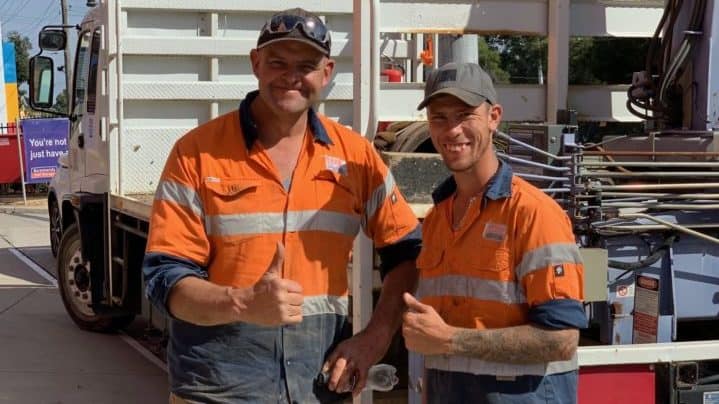When site conditions on a microtunnelling project are seen as high risk, there is a greater chance that contractors will turn the job down as it may be seen as being unachievable. However, as a growing industry, this can create long-term limitations on the work available. This is why Edge Underground subscribes to a philosophy that no job is too hard, and that with some consideration, every job is possible, even under the toughest conditions.
Stuart Harrison, Managing Director at Edge Underground, said at least half the projects the company is undertaking are those they have found because no other contractor wants to do them, or thinks that they can’t be done successfully.
“Part of the reason that we take on these jobs is because we’ve got a belief in our own ability, and the equipment that we run,” Mr Harrison said.
“But also we feel like it is somewhat of a responsibility to show people what is possible. At the end of the day if contractors keep turning around saying, ‘Oh no, there’s a problem, you need to dig this up’, or say straight up that the project is going to be too difficult, we’re essentially cutting down the scope of our own industry.
“We certainly don’t look at it that way. We look at every job as being achievable, it’s just a matter of finding a way and a means to complete that job successfully and achieve that outcome.
“We go out to a site and the way we look at it is the job needs to be done, so we’ll get it done. We go out there with a good attitude and with state-of-the-art equipment, and understand all the different aspects of a job and the complexities, and still find a way to get it done.
“We pride ourselves on setting the benchmark for the industry.”
Equipment is key
Having the right equipment is key to a successful microtunnelling project, especially in high risk conditions.
“One example of this was a project in Donnybrook, Victoria, which no other contractor wanted to take on due to the ground conditions (a combination of extreme hard rock with seams of clay and fractures) which had a high risk of wedging occuring,” Mr Harrison said.
“We use the Vermeer AXIS laser guided boring system, which allows the contractor to retract the drill head to complete a pilot line and inspect the ground to confirm conditions – something that other machines aren’t able to do. This means we’re not going in blind, or with incorrect or partial geotechnical information and we can configure the reaming tool to best suit conditions for pipe jacking.”
This feature means that if conditions do change again further down the installation, the drill head can be retracted and changed out to something more suitable so drilling can start again from the same spot. Other machines don’t have this capability, which increases risk as if this happens and it can’t retract, the drill head has to be dug up from above, increasing time and costs.
“We don’t base what we think is achievable on anyone else other than ourselves. We look at what the conditions are, and knowing our capabilities, we make our own assessment whether we think it is achievable and at what level of relative risk,” Mr Harrison said.
Considering alternatives
While having a wide range of experience in different and difficult conditions, as well as having state-of-the-art equipment, goes a long way in being able to provide a solution for high risk jobs, sometimes microtunnelling isn’t the best option and Mr Harrison said when this is the case, it is the duty of the contractor to let the project manager know.
“We do our best to try and speak to contractors or an engineer who’s designing a project about site-specific issues or challenging conditions about what we can offer. We’re also happy to let them know that maybe what we’re offering isn’t the best solution on their job,” Mr Harrison said.
“We understand that trenchless is a very broad category; it’s all about putting a pipe in the ground without the need to excavate. But within the trenchless sector, you speak to any trenchless professionals and each one of those variations in technology have some real strengths and limitations.
“If you use the wrong tool in an application, it’s disappointing. It’s a disappointing result financially and in effectiveness. So wherever we can get more industry professionals assisting to get designs right, relative to the desired outcome, I think we help our industry grow, because people that we’re working with gain confidence that they’re going to prescribe something that will be successful.
“I think everyone in the industry has the burden to assist that process, and help clients come to some sort of a great outcome from our advice, from what we’re putting in.”

